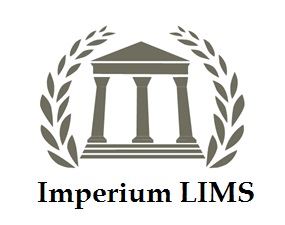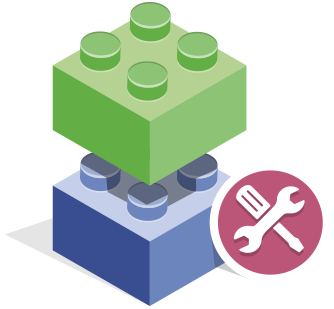Imperium
 Our LIMS software is a generic laboratory testing/management software serves in a variety of industries.
Easy to use, workflows are configurable and provide several options to meet the needs of any small laboratory
in their daily operations and customer order management. With this software you get the least expensive solution to achieve your goals.
Our LIMS software is a generic laboratory testing/management software serves in a variety of industries.
Easy to use, workflows are configurable and provide several options to meet the needs of any small laboratory
in their daily operations and customer order management. With this software you get the least expensive solution to achieve your goals.
Introduction
 A range of analytical techniques are employed in laboratories and in the laboratory environment the staff must keep track of products, and the samples taken, as well as the test results. The data, which is acquired during analysis, is usually then controlled and managed centrally. This `control' is usually carried out most effectively through a piece of laboratory software known as a LIMS (Laboratory Information Management System). The automation of techniques (and removal of manual procedures) simplifies the acquisition of data taken from samples. LIMS is an information system that can schedule testing, track tests and pass test results to other systems in the supply chain, such as an Enterprise Resource Planning (ERP) system.
A range of analytical techniques are employed in laboratories and in the laboratory environment the staff must keep track of products, and the samples taken, as well as the test results. The data, which is acquired during analysis, is usually then controlled and managed centrally. This `control' is usually carried out most effectively through a piece of laboratory software known as a LIMS (Laboratory Information Management System). The automation of techniques (and removal of manual procedures) simplifies the acquisition of data taken from samples. LIMS is an information system that can schedule testing, track tests and pass test results to other systems in the supply chain, such as an Enterprise Resource Planning (ERP) system.
Our Laboratory Information Management System (LIMS) is a generic laboratory testing/management software serves in a variety of industries. Easy to use, workflows are configurable and provide several options to meet the needs of any small laboratory in their daily operations and customer order management. With this system you get the least expensive solution to achieve your goals.
Primary role of LIMS
 The LIMS system is used primary as a reporting tool where users can enter information about a test sample, such as the inspection number, the batch of material it was extracted from, the date, time, location etc. The LIMS system holds the details of the sample and the information pertaining to where the sample is. As the sample moves through the testing process the LIMS system can be updated so that users where each sample is at any time. The tracking of a sample can be performed by entering the sample number into the system and manually entering the location or by using barcodes. When a sample is initially entered into the system, the LIMS can print a barcode label with the unique sample number.
The LIMS system is used primary as a reporting tool where users can enter information about a test sample, such as the inspection number, the batch of material it was extracted from, the date, time, location etc. The LIMS system holds the details of the sample and the information pertaining to where the sample is. As the sample moves through the testing process the LIMS system can be updated so that users where each sample is at any time. The tracking of a sample can be performed by entering the sample number into the system and manually entering the location or by using barcodes. When a sample is initially entered into the system, the LIMS can print a barcode label with the unique sample number.
System evolution
 While a laboratory information management system represents a comprehensive system, it is rarely static and may evolve with the laboratory. Traditionally, LIM systems have been initially installed to manage samples, including:
While a laboratory information management system represents a comprehensive system, it is rarely static and may evolve with the laboratory. Traditionally, LIM systems have been initially installed to manage samples, including:
- receiving and tracking samples and associated data
- assignment and scheduling of the sample into the lab's workflow
- processing associated with the sample
- data storage related to analysis
- approval and compilation of sample data for reporting and future use
LIMS functionality
 Different LIMS systems offer a variety of functionality. The systems have developed from simple data entry and record storage to complex relational database driven tools. They now offer enhanced functionality often provided over the wireless networks and company intranet, allowing greater flexibility for inspections in remote and difficult environments
Different LIMS systems offer a variety of functionality. The systems have developed from simple data entry and record storage to complex relational database driven tools. They now offer enhanced functionality often provided over the wireless networks and company intranet, allowing greater flexibility for inspections in remote and difficult environments
Regulations and compliance
 The functionality of the LIMS system is far greater than just tracking and reporting on samples.
Other regulations that LIMS systems must operate under include:
The functionality of the LIMS system is far greater than just tracking and reporting on samples.
Other regulations that LIMS systems must operate under include:
- cGMP 21 CFR Part 210 - Current Good Manufacturing Practice
- HIPAA
- ISO 9001
- ISO 15189
- ISO 17025
Equipment calibration and maintenance
 When inspections are carried out the equipment used to extract the sample and to test the sample must be maintained correctly and calibrated so that there are no errors introduced into the test results. The LIMS system should contain maintenance records of the equipment used in testing so that notifications can be generated to perform regular preventive maintenance. With some instruments and equipment, the requirement may include calibration after a certain number of uses, for example the use of a depth micrometer may require that it is calibrated after 50 uses or every month, whichever comes first. LIMS systems can also contain the calibration instructions so that a notification and a calibration instruction sheet can be sent to the maintenance department or a specialty outside vendor.
When inspections are carried out the equipment used to extract the sample and to test the sample must be maintained correctly and calibrated so that there are no errors introduced into the test results. The LIMS system should contain maintenance records of the equipment used in testing so that notifications can be generated to perform regular preventive maintenance. With some instruments and equipment, the requirement may include calibration after a certain number of uses, for example the use of a depth micrometer may require that it is calibrated after 50 uses or every month, whichever comes first. LIMS systems can also contain the calibration instructions so that a notification and a calibration instruction sheet can be sent to the maintenance department or a specialty outside vendor.
Concerns about a new LIMS

- Customization: Modification in LIMS/interfaces are usually required for specific lab/client needs.
- Limited interface between lab & field computer systems: Some of the equipments do not have duplex/real-time communication capabilities.
- Validation needed at the commissioning phase: Adequate validation necessary during the initial setup process to ensure data quality.
- Data integrity and confidentiality has to be ensured: Access rules have to be defined. Additional firewall may be needed when external clients have direct access to data.
- Data migration: It takes time and resource to convert data from the existing system into the new one.
- 'culture shock': The new system may have very different UI. It can take a plenty of time for the users to get accusomoted to the new system. Initial expectations can be different in every user.
Summary
 Companies require that quality is part of every link in the supply chain, whether it is raw material at a vendor's facility or finished goods delivered to a customer. To ensure that the quality personnel are able to achieve the optimum results, a Laboratory Information Management System is vital to that success.
Companies require that quality is part of every link in the supply chain, whether it is raw material at a vendor's facility or finished goods delivered to a customer. To ensure that the quality personnel are able to achieve the optimum results, a Laboratory Information Management System is vital to that success.